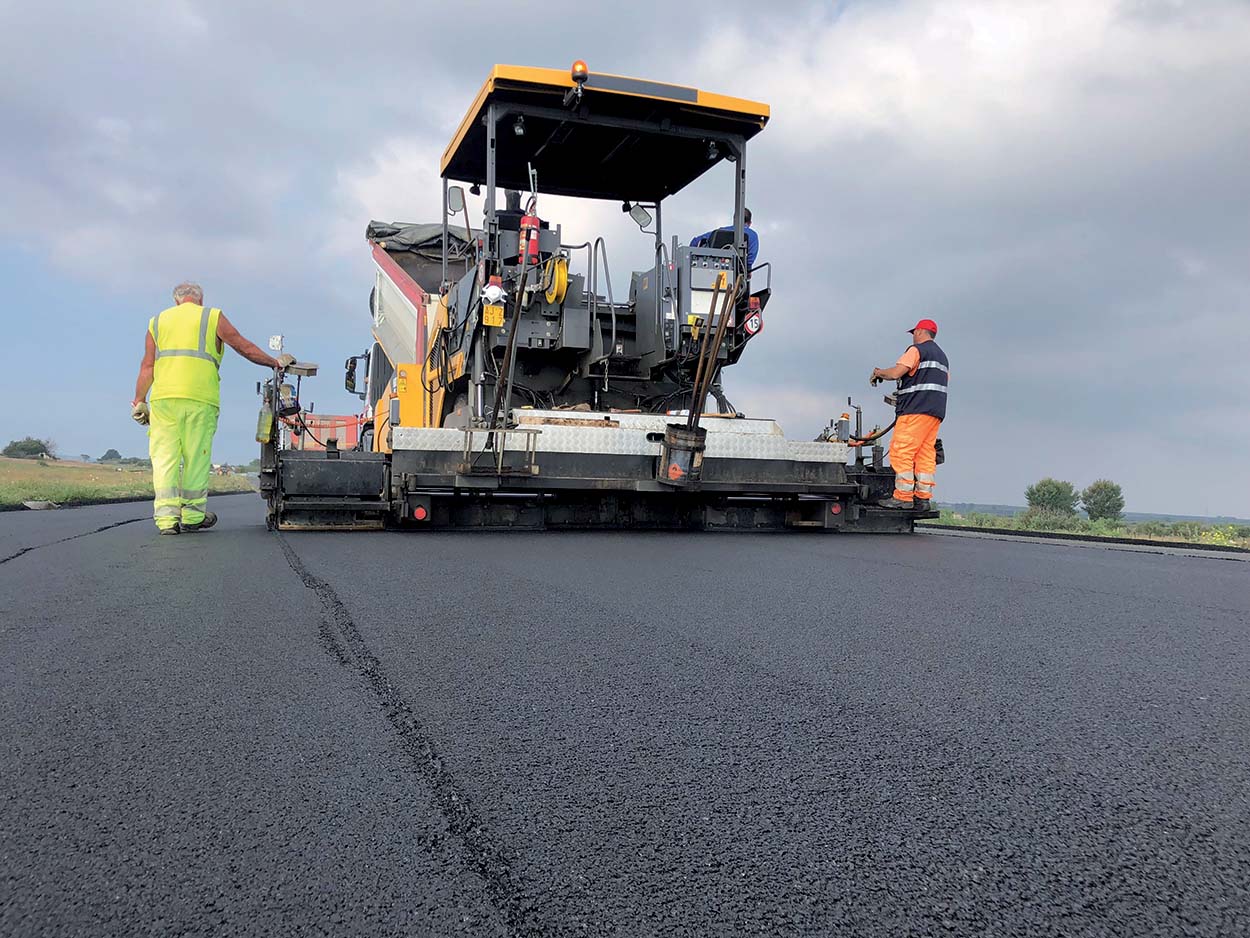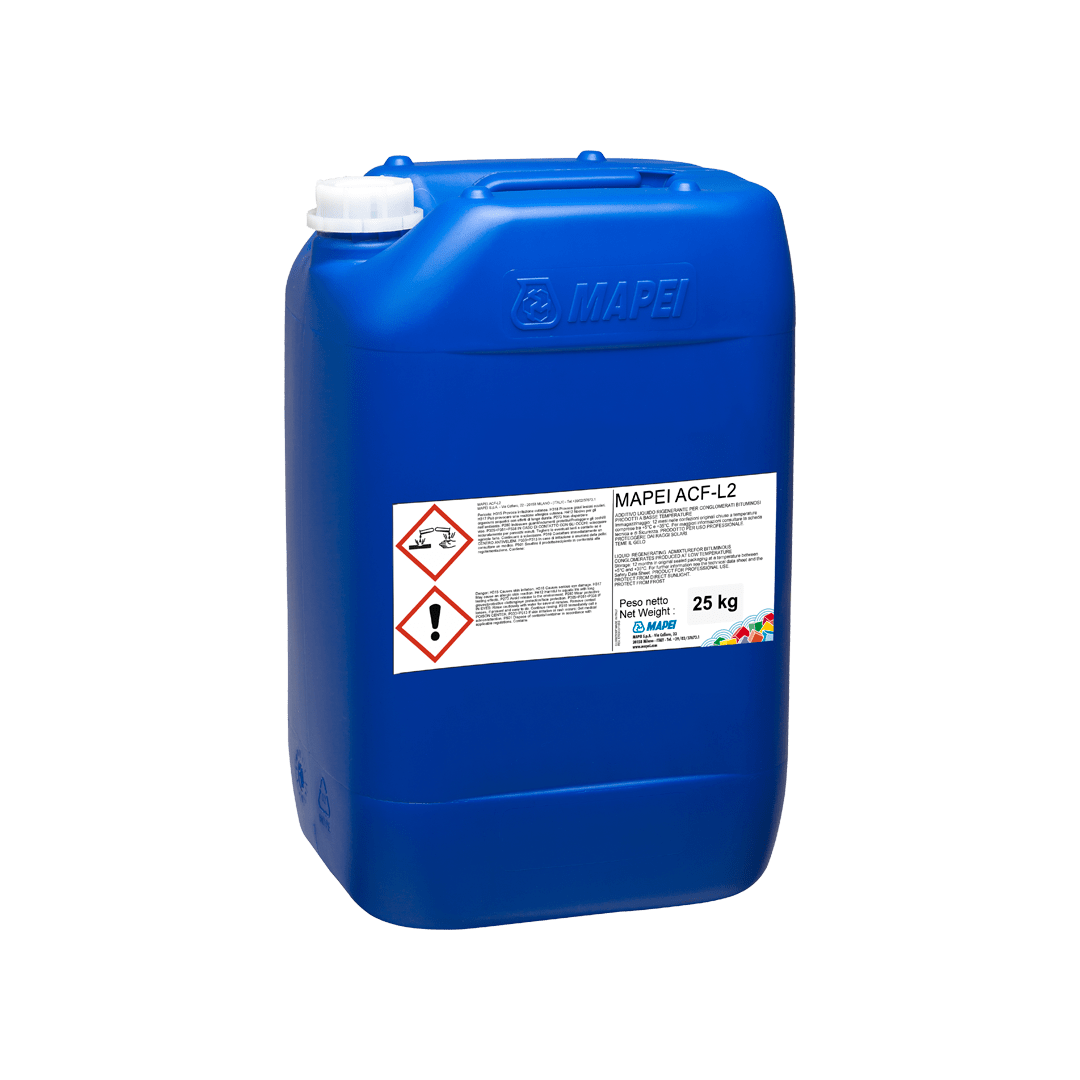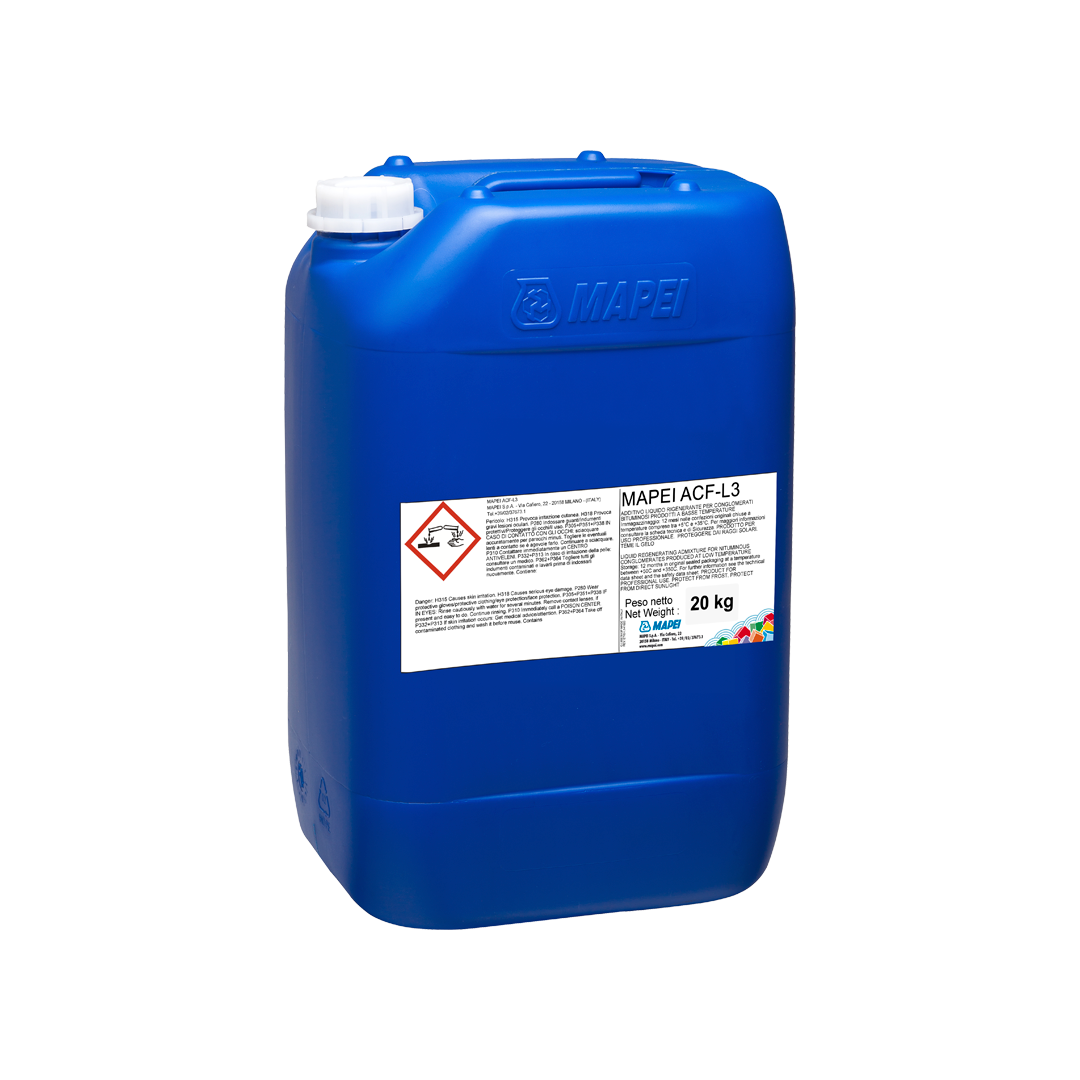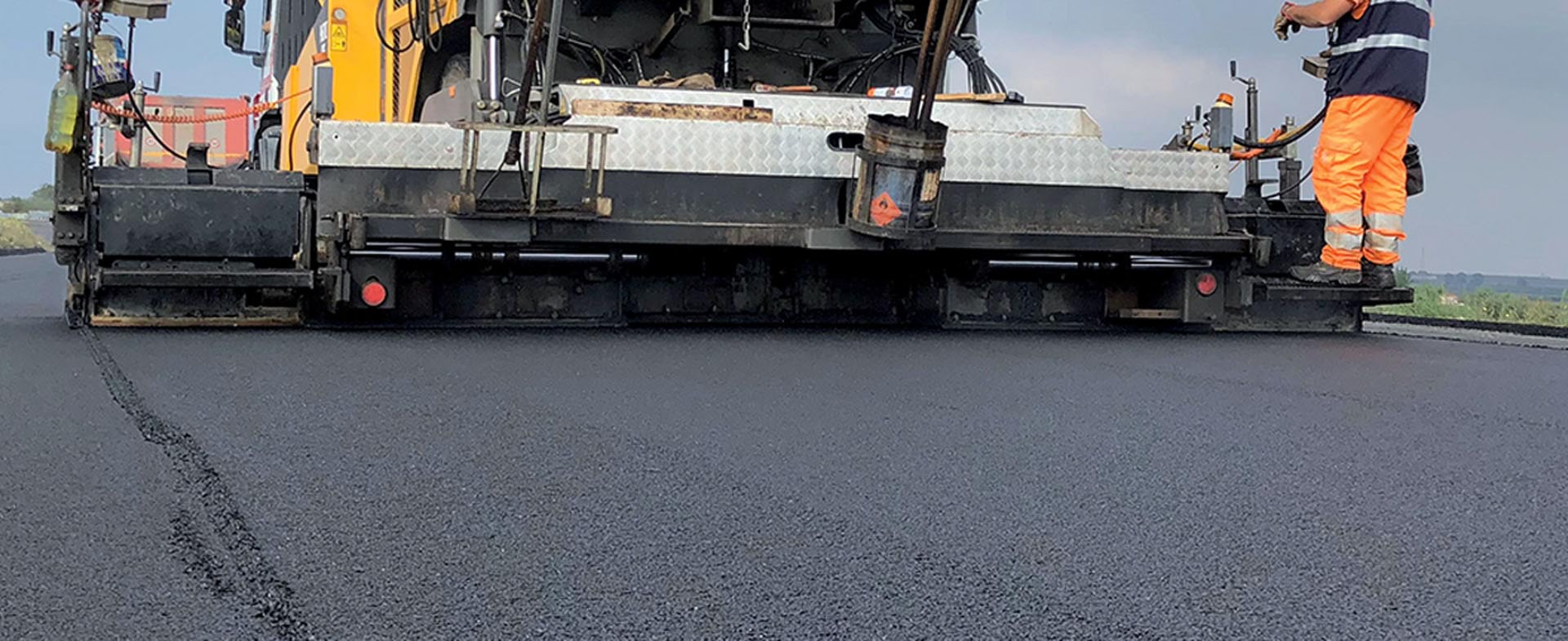
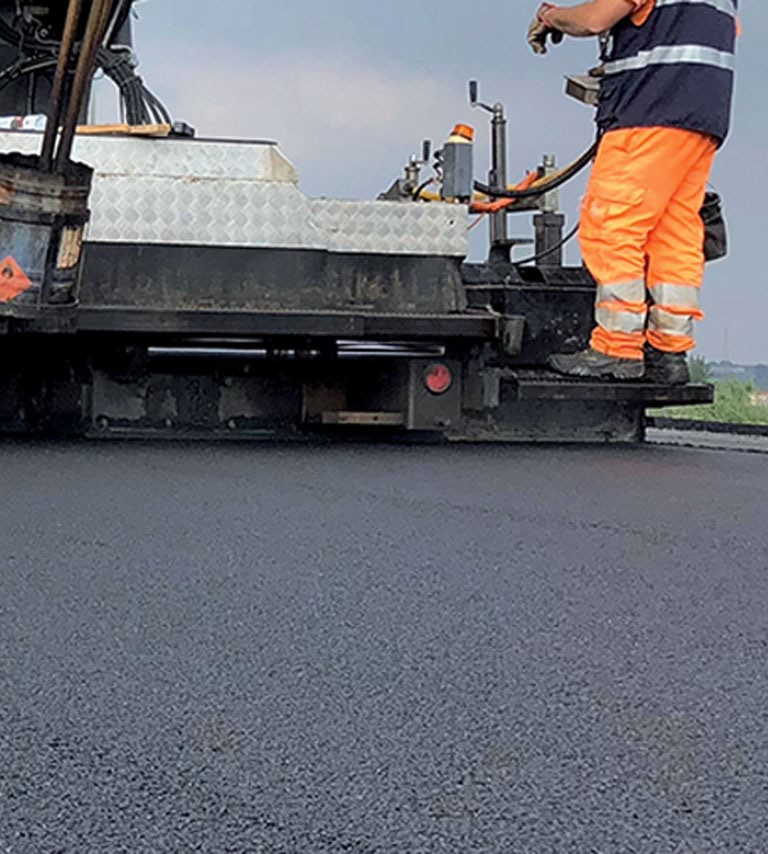
Mapei: Best Performer in the Circular Economy
The company was rewarded for its admixtures for creating new bituminous conglomerates.
SUSTAINABILITY; ONE OF THE FOUR CORNERSTONES OF MAPEI
For a long time now Mapei has been focusing on Sustainability as a vital driver alongside the three pillars of its corporate strategy: Research & Development, Specialisation and Internationalisation.
For Mapei sustainability means products with a high durability and with low environmental impact that can raise comfort standards while reducing the amount of energy dispersion in buildings. It also means using recycled material, recovering and reusing waste, using renewable energy sources in manufacturing processes, and preferring other means of transport to road vehicles.
MAPEI ADMIXTURES FOR THE CIRCULAR ECONOMY
Mapei’s ongoing commitment to manufacturing products that are environmentally friendly resulted in the company winning the Best Performer in the Circular Economy 2019/2020 award, devised by Confindustria, the Confederation of the Italian manufacturing and service companies, with the backing of 4.Manager (an association set up by Confindustria to help managers and business people to develop).
210 companies took part in the second edition of a prize aimed at recognising the value of projects by associate companies promoting sustainable behaviour.
INTRDODUCING THE NEW ACF LINE OF ADMIXTURES
Mapei was rewarded for its admixtures for creating new bituminous conglomerates (MAPEI ACF-L1, ACF-L2 and ACF-L3) that allow substantial amounts of road asphalt to be recycled.
Mapei has recently developed a line of products for bituminous pavements: this is a new line developed by its R&D laboratories in Milan and is beginning to grow in other subsidiaries of the Group.
Its attention then shifted to studying solutions guaranteeing the same performances as the previously developed ACFs but with a careful eye for aspects related to environmental sustainability and higher user safety, making these products much less hazardous.
The obvious environmental benefits deriving from the use of ACFs were evaluated by the LCA (Life Cycle Assessment) methodology, comparing the environmental impacts from a conventional bituminous conglomerate with those of a bitumen designed using ACFs and, hence, a greater amount of recycled material.
LCA methodology allowed to compare the environmental impacts caused by manufacturing asphalt containing only pure material, with an asphalt containing 15% RAP (recycled asphalt pavement) and another one with a 40% RAP: ACF admixtures promote the use of high percentages of RAP.
The environmental study encompassed every phase in the lifecycle of asphalt starting from the impact of raw materials, their transportation, the manufacturing process, and the use of asphalt for building local roads, secondary/main urban roads and motorways.
Several environmental impacts are considered: from the familiar global warming caused by greenhouse gas emissions (Global Warming Potential, also known as Carbon Footprint) to impacts like eutrophication (anomalous growth of aquatic organisms, such as algae, due to a decrease in the density of aquatic fauna), depletion of the ozone layer, conversion of pollutants into acids (eventually resulting in acid rain), depletion of natural resources, and others.
LOWER CO2 EMISSIONS THANKS TO ACF ADMIXTURES
The calculations carried out by the Mapei Environmental Sustainability Department showed that using asphalt containing only virgin raw materials resulted in 17% savings in CO2 compared to asphalt containing 15% RAP. CO2 emissions could be reduced by up to 30% in the case of asphalt with 40% RAP, thanks to the use of ACF Admixtures.
For the construction of a 1 km section of three-lane motorway within the framework of a circular economy, CO2 savings are quite considerable compared to standard methods, equivalent to:
- 100,732 kg CO2 for the circular economy solution with 15% RAP, which corresponds to an annual absorption of approximately 1300 plants or the equivalent to the CO2 emissions from a car travelling over a distance of 872,894 km (equivalent to 1,505 journeys from Milan to Rome).
- 187,354 kg CO2 for the circular economy solution with 40% RAP, which corresponds to an annual absorption of approximately 2417 plants or the equivalent to the CO2 emissions from a car travelling over a distance of 1,623,518 km (equivalent to 2,799 journeys from Milan to Rome).
The circularity study promoted by the use of ACF admixtures is confirmed by another project carried out by Assolombarda’s (the Association of the Lombardy-based companies) Green Economy Network in conjunction with the IEFE’s (Bocconi University's Institute of Economics of Energy Sources) GEO (Green Economy Observatory): the C. E. R. C. A. Project (Circular Economy as a Competitive Resource for Businesses). This project is aimed at identifying and measuring the circular economy approach implemented by businesses.
Mikaela Decio. Corporate Environmental Sustainability, Mapei Group
Gilberto Del Zoppo. R&D Admixtures for concrete, Mapei SpA (Italy)





